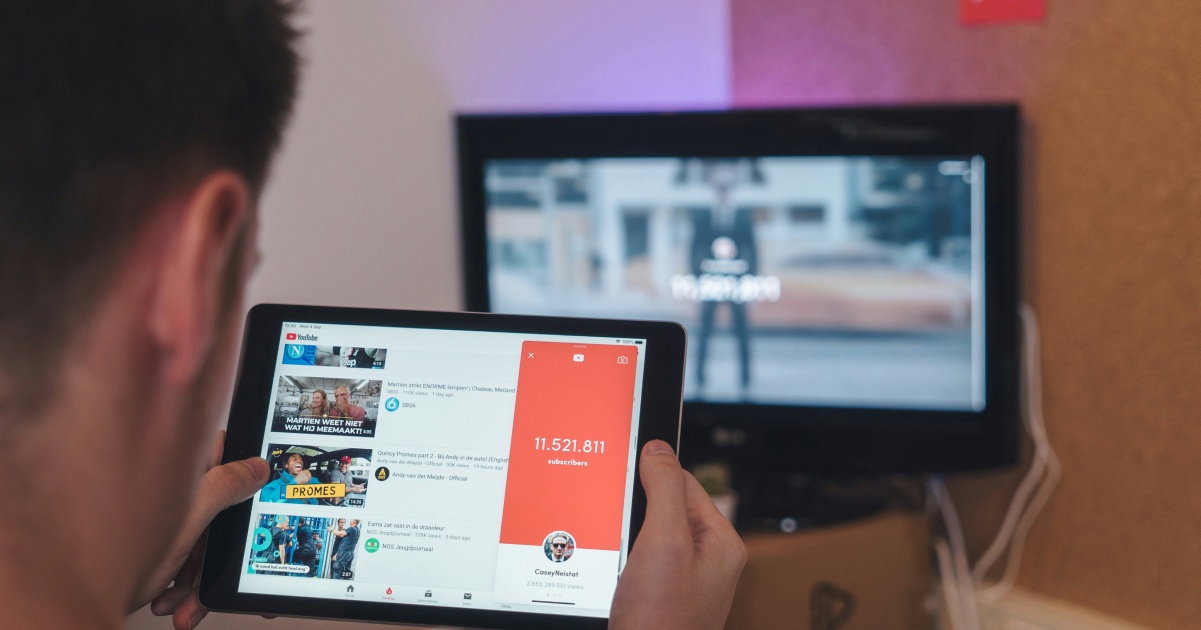
How to Spot a Deepfake
In an age where digital manipulation has become increasingly sophisticated, knowing how to spot a deepfake is crucial for safeguarding yourself and others online. Deepfake technology has revolutionized the creation of synthetic media, raising concerns about the authenticity of content in various spheres. With the ability to seamlessly manipulate videos and audio, deepfakes pose significant threats to individuals, businesses, and society. Just ask celebrities such as Taylor Swift and Mr. Beast, who have been victimized by deepfake technology.
In this blog post, we’ll delve into what deepfakes are, how they work, their potential dangers, and their legal implications. And, most importantly, how you can spot them to safeguard yourself and others.
What Is a Deepfake?
Deepfakes are synthetic media in which a person in an existing image or video is replaced with someone else’s likeness using advanced machine-learning algorithms. These manipulated videos or audio recordings can be incredibly convincing, often indistinguishable from authentic content.
There are many types of deepfakes, such as:
- Face swapping. This occurs when another person’s face replaces the face of the original person.
- Lip synchronization. This is where the mouth of someone speaking is modified by an audio track, making the voice different from the original.
- Voice cloning. Here, a voice is copied to use that voice somewhere else.
How Do Deepfakes Work?
Deepfake technology utilizes deep learning algorithms, particularly generative adversarial networks (GANs), to analyze and mimic facial expressions, voice tones, and mannerisms. By training on vast datasets of images and videos, these algorithms can generate highly realistic simulations of individuals, allowing malicious actors to create convincing fake content.
Why Are Deepfakes Dangerous?
The proliferation of deepfake technology presents numerous risks, including misinformation, defamation, and privacy violations. Deepfakes have the potential to spread false narratives, manipulate public opinion, and even incite violence or unrest. Moreover, they can be used to impersonate individuals, leading to reputational damage or financial losses.
Are Deepfakes Illegal?
The legality of deepfakes varies depending on jurisdiction and the context in which they are used. Let’s explore the deepfake situation in the United States and the United Kingdom.
United States
In the United States, laws regarding deepfakes are still evolving, with limited federal legislation specifically addressing the issue. However, existing laws related to fraud, defamation, and intellectual property rights may apply to specific deepfake scenarios. In January 2024, representatives proposed the No Artificial Intelligence Fake Replicas And Unauthorized Duplications Act. The bill establishes a federal framework to protect individuals against Artificial Intelligence-generated fakes by making it illegal to create digital depictions of any person, dead or alive, without their permission.
The US has also proposed the following:
- The Senate’s Nurture Originals, Foster Art, and Keep Entertainment Safe (NO FAKES) Act, would protect the performers’ voice and visual likeness.
- The Disrupt Explicit Forged Images and Non-Consensual Edits (DEFIANCE) Act would allow people to sue over faked pornographic images of themselves.
As the US is decentralized, some individual US states have already taken action or are in the process of doing so against deepfake technology. However, the current laws vary in many ways depending on the state. This includes the definition of deepfakes and the type of liability they impose. States that target deepfake content include Florida, Georgia, Hawaii, and Illinois, to name a few.
Let’s explore two states that took early action against deepfakes.
California Deepfake Law
In the realm of AI regulation within the United States, California stands as a pioneer. Notably, its enactment of the California deepfake law marked one of the earliest instances nationwide, commencing in 2019. This legislation not only renders non-consensual deepfake pornography a criminal offense but also grants victims the capacity to pursue legal action against individuals who fabricate images utilizing their likenesses (under Assembly Bill 602). Furthermore, it prohibits the utilization of AI-generated deepfakes during election campaigns, as outlined in Assembly Bill 730.
Texas Deepfake Law
The Lone Star state of Texas took an early stance in the United States by enacting legislation, specifically, Senate Bill 751, aimed at curtailing the creation and dissemination of videos with the intent to manipulate or interfere with elections. Subsequently, Texas further fortified its legal framework concerning deepfake technology by implementing the Unlawful Production or Distribution of Certain Sexually Explicit Videos law. This statute criminalizes the production of explicit deepfake videos without the consent of the individuals depicted therein.
United Kingdom
In the United Kingdom, creating and distributing deepfakes with malicious intent could potentially violate laws related to fraud, harassment, or privacy infringement. The UK government is also considering legislative measures to combat the spread of harmful deepfake content.
In 2023, Britain enacted the UK Online Safety Act. This Act prohibits disseminating manipulated explicit content under circumstances where it deliberately or negligently inflicts harm upon an individual. However, the Act doesn’t extend to the prohibition of pornographic deepfakes, nor does it restrict their sharing unless there is clear evidence of intent to cause distress.
Additionally, the amendments don’t criminalize the creation of other AI-generated media without the subject’s consent. In such cases, individuals whose likeness has been exploited for malicious purposes may seek recourse through defamation, privacy laws, harassment statutes, data protection regulations, intellectual property rights, or other applicable criminal statutes. However, these can often be intricate and challenging to substantiate.
How to Spot a Deepfake
Identifying deepfake content amidst the vast sea of digital media can be challenging but not impossible (just as spotting fake news). Understanding the telltale signs and employing critical thinking skills can enhance your ability to detect manipulated content and protect yourself from potential harm. Spotting deepfakes requires having the same meticulous eyes you use while proofreading.
In this section, we’ll explore various strategies and techniques to help you spot a deepfake.
Examine Facial Features
Deepfakes may exhibit image or video quality inconsistencies, such as unnatural facial movements or distorted features. It’s also a good idea to focus on facial hair appearance to see if anything is unauthentic. Deepfakes often add or remove mustaches, sideburns, and beards. However, these alterations might not look natural. We also recommend looking at other features like facial moles or pimples to see if they seem genuine.
Scrutinize the Eyes
Look out for unnatural shadows around the eyes. Are there shadows where they should naturally fall? Deepfakes might not render the exact physics of light and shadow.
Pay Attention to Audio Cues
Listen for any anomalies in voice tone, speech patterns, or background noise that could indicate manipulation.
Examine Skin Texture
Examining skin texture, especially the cheeks and forehead, is vital. You want to see if the skin texture is unnaturally smooth or excessively wrinkled. Notice if the skin’s aging matches that of the hair and eyes, as deepfakes often display inconsistencies.
Look for Inconsistencies
Compare the content with known facts, context, or previous statements to identify discrepancies or contradictions.
Consult Experts
Seek guidance from professionals or technology experts who specialize in detecting deepfakes. We recommend consulting reliable sources, such as a fact-checking website, especially if it is a well-known fake.
How to Fact-Check
We recommend our comprehensive How to Fact-Check course to enhance further your ability to discern fact from fiction in the digital realm. It features a module dedicated to identifying images, videos, and audio content that has been manipulated. We even offer free lessons for this course.





Your email address will not be published.